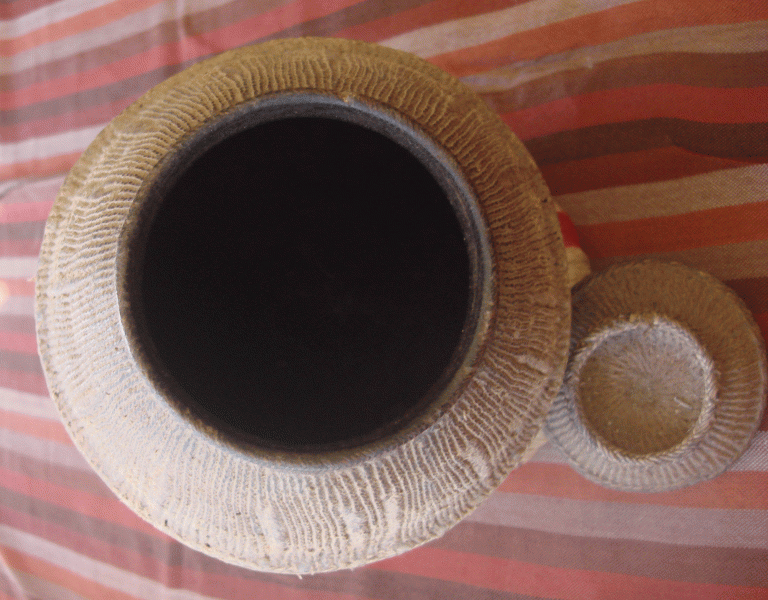Made originally with grasses since time immemorial by agricultural peoples living in the northern and central highlands, these baskets are both functional and decorative. Many have an attached, woven stand.


Then with thread and grasses in the primary colours favored by the cultures of Ethiopia.



A basket used to separate the grain from the chaff


A ‘messob’ designed for use as a communal table

A ‘messob’ opened up to show where ‘injera’ (a traditional circular bread made of tef – tef eregrostis : a cereal domesticated only in Ethiopia) is placed to be piled high with curries of various kinds to be shared communally.

Made in 1967 by pupils of the Itegue Mennen School, Addis Ababa, this is a decorative platter for injera.

A small table, perhaps 18 inches high, for small eats
And now in all kinds of colours, with thread, with grasses and with both; and with non-traditional designs like camels.
















Probably the most aesthetically skilled of all Ethiopian basketry is made by the Adere, a predominantly Moslem people, whose home base is the ancient , walled city of Harar. Still made of dyed grass with patterns carried from generation to generation.


The front and back of an Adere basket made approximately 45 years ago with a specific pattern by a woman for her daughter-in-law at the time of her marriage.

An Adere basket made by a woman for her mother-in-law, a customary requirement (hamat mot), within one year of a marriage. 20th century. Unknown artist. Minneapolis Institute of Art loan to the Walters Museum, Baltimore in 2023/24
The most technically proficient of all the basketry which I have seen in Ethiopia is made by the Boran, the senior clan of the Oromo.
They are cattle nomads who – with increasing difficulty because of global warming – cross and recross the Ethiopian/Kenyan border in pursuit of water and grass for their cattle.
These baskets – ‘oholle’ – are of grass and are made water tight not only by their tight weave – baskets vary in woven decoration – but also by the cauterization of the interior of the basket by the lit ember of a particular fragrant wood. The basket is used for making yoghurt, the particular taste of which remains with the Boran for life.




And here from southern Ethiopia is a container which is a marker of the move of a pastoral people to agriculture:
a ceramic base, a lid made of basketry, and a top handle made of a gourd, decorated with cowrie shells from the distant Indian Ocean.
Pastoral peoples cannot carry ceramic objects.
This container made me sad because I have been among the Boran and the sophistications of their self-governance ***, their profound integration in their natural environment, the respect and care of their cattle, the amatory and sexual freedom of their women, and the vast stillness of their southern Ethiopian and Northern Kenyan skies.
And our species lost certain well-worn, ancient pathways of human freedom
when we settled in one place to till the ground and produce ‘surpluses’ and live in cramped quarters;
and submit to kings and the conflict of classes.

*** “Oromo Democracy: an Indigenous African Political System”, 2006, Asmarom Legesse











Exquisite